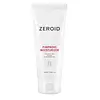What's inside
What's inside
 Key Ingredients
Key Ingredients

 Benefits
Benefits

 Concerns
Concerns

 Ingredients Side-by-side
Ingredients Side-by-side

Water
Skin ConditioningCyclopentasiloxane
EmollientGlycerin
HumectantPropanediol
SolventC30-45 Alkyl Cetearyl Dimethicone Crosspolymer
EmollientPanthenol
Skin ConditioningCaprylyl Methicone
Skin ConditioningCaprylic/Capric Triglyceride
MaskingCetearyl Alcohol
EmollientNiacinamide
SmoothingMyristoyl/Palmitoyl Oxostearamide/Arachamide Mea
Skin ConditioningMadecassoside
AntioxidantAmmonium Acryloyldimethyltaurate/Vp Copolymer
Sorbitan Stearate
EmulsifyingPolyglyceryl-4 Caprate
EmulsifyingStearic Acid
CleansingGlyceryl Stearate
EmollientPhytosterols
Skin ConditioningSodium Hyaluronate
HumectantXanthan Gum
Emulsifying1,2-Hexanediol
Skin ConditioningCaprylyl Glycol
EmollientWater, Cyclopentasiloxane, Glycerin, Propanediol, C30-45 Alkyl Cetearyl Dimethicone Crosspolymer, Panthenol, Caprylyl Methicone, Caprylic/Capric Triglyceride, Cetearyl Alcohol, Niacinamide, Myristoyl/Palmitoyl Oxostearamide/Arachamide Mea, Madecassoside, Ammonium Acryloyldimethyltaurate/Vp Copolymer, Sorbitan Stearate, Polyglyceryl-4 Caprate, Stearic Acid, Glyceryl Stearate, Phytosterols, Sodium Hyaluronate, Xanthan Gum, 1,2-Hexanediol, Caprylyl Glycol
Water
Skin ConditioningGlycerin
HumectantCaprylic/Capric Triglyceride
Masking1,2-Hexanediol
Skin ConditioningPolyglyceryl-10 Distearate
EmulsifyingStearic Acid
CleansingTocopherol
AntioxidantSodium Polyacrylate
AbsorbentAllantoin
Skin ConditioningMyristoyl/Palmitoyl Oxostearamide/Arachamide Mea
Skin ConditioningOleamide Mea
Carbomer
Emulsion StabilisingArginine
MaskingPhytosterols
Skin ConditioningDimethyl Isopropanolamine
BufferingSodium Hyaluronate
HumectantBeta-Glucan
Skin ConditioningWater, Glycerin, Caprylic/Capric Triglyceride, 1,2-Hexanediol, Polyglyceryl-10 Distearate, Stearic Acid, Tocopherol, Sodium Polyacrylate, Allantoin, Myristoyl/Palmitoyl Oxostearamide/Arachamide Mea, Oleamide Mea, Carbomer, Arginine, Phytosterols, Dimethyl Isopropanolamine, Sodium Hyaluronate, Beta-Glucan
 Reviews
Reviews

Ingredients Explained
These ingredients are found in both products.
Ingredients higher up in an ingredient list are typically present in a larger amount.
1,2-Hexanediol is a synthetic liquid and another multi-functional powerhouse.
It is a:
- Humectant, drawing moisture into the skin
- Emollient, helping to soften skin
- Solvent, dispersing and stabilizing formulas
- Preservative booster, enhancing the antimicrobial activity of other preservatives
This ingredient is an emollient, solvent, and texture enhancer. It is considered a skin-softener by helping the skin prevent moisture loss.
It helps thicken a product's formula and makes it easier to spread by dissolving clumping compounds.
Caprylic Triglyceride is made by combining glycerin with coconut oil, forming a clear liquid.
While there is an assumption Caprylic Triglyceride can clog pores due to it being derived from coconut oil, there is no research supporting this.
Learn more about Caprylic/Capric TriglycerideGlycerin is already naturally found in your skin. It helps moisturize and protect your skin.
A study from 2016 found glycerin to be more effective as a humectant than AHAs and hyaluronic acid.
As a humectant, it helps the skin stay hydrated by pulling moisture to your skin. The low molecular weight of glycerin allows it to pull moisture into the deeper layers of your skin.
Hydrated skin improves your skin barrier; Your skin barrier helps protect against irritants and bacteria.
Glycerin has also been found to have antimicrobial and antiviral properties. Due to these properties, glycerin is often used in wound and burn treatments.
In cosmetics, glycerin is usually derived from plants such as soybean or palm. However, it can also be sourced from animals, such as tallow or animal fat.
This ingredient is organic, colorless, odorless, and non-toxic.
Glycerin is the name for this ingredient in American English. British English uses Glycerol/Glycerine.
Learn more about GlycerinWe don't have a description for Myristoyl/Palmitoyl Oxostearamide/Arachamide Mea yet.
Phytosterols come from plants, nuts, and whole grains. These compounds have skin soothing and moisturizing properties.
Fun fact: They are similar to cholesterol and can help lower cholesterol levels.
Sodium Hyaluronate is hyaluronic acid's salt form. It is commonly derived from the sodium salt of hyaluronic acid.
Like hyaluronic acid, it is great at holding water and acts as a humectant. This makes it a great skin hydrating ingredient.
Sodium Hyaluronate is naturally occurring in our bodies and is mostly found in eye fluid and joints.
These are some other common types of Hyaluronic Acid:
Learn more about Sodium HyaluronateStearic Acid is a fatty acid. It is an emollient, emulsifier, and texture enhancer.
As an emollient, stearic acid helps soften skin. It aids the skin's protective barrier by preventing water loss. It also provides a gentle cleansing effect without stripping away natural oils.
Stearic acid may also be used to enhance the texture of products. It can add volume and stabilize ingredients such as water and oil. This can help water and oil ingredients from separating.
Sources of stearic acid include animal or vegetable fats/oils such as coconut or shea. It can be naturally found in butter, cocoa butter, shea butter, vegetable fats, and animal tallow.
This ingredient may not be Malassezia folliculitis, or fungal-acne safe.
Learn more about Stearic AcidWater. It's the most common cosmetic ingredient of all. You'll usually see it at the top of ingredient lists, meaning that it makes up the largest part of the product.
So why is it so popular? Water most often acts as a solvent - this means that it helps dissolve other ingredients into the formulation.
You'll also recognize water as that liquid we all need to stay alive. If you see this, drink a glass of water. Stay hydrated!
Learn more about Water